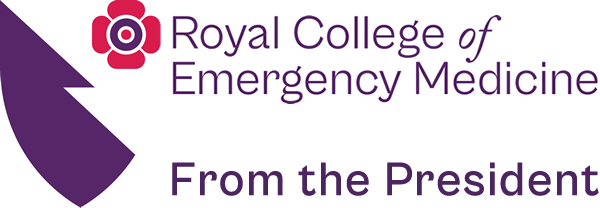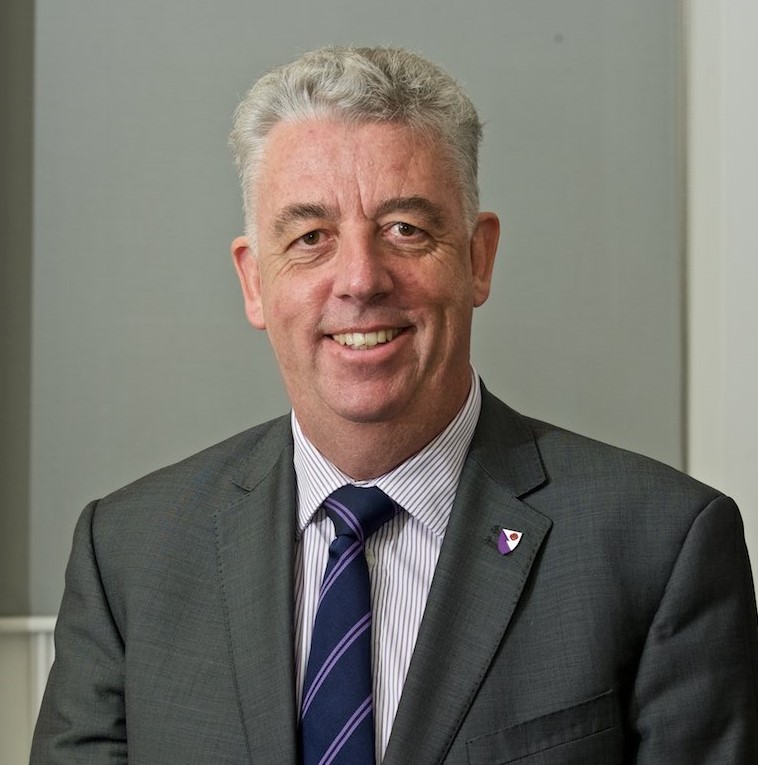Well, we are properly into 2016 and there is much to report. I would like to start the year with positive news and there has indeed been good progress. Our STEP campaign is just 14 months old but is now ubiquitously referred to and bearing fruit.
1. Safe and sustainable staffing. As a result of the work done with HEE we now have 300 additional ACCS EM posts – with almost 100% recruitment. The DREEM programme agreed with the GMC has delivered a further 100 ST3 trainees and we have successfully lobbied for both programmes to be continued and funded.
In addition this year will see RCEM oversee and administer the credentialing of Advanced Care Practitioners. This will allow senior nurses and paramedics with appropriate, accredited training and competencies to obtain a nationally recognized and transferable qualification. We are delighted to have the opportunity to ensure clinical colleagues from other disciplines receive the necessary training and supervision to effectively increase the workforce within emergency departments, thereby easing the strain.
2. Tariff and term reform. As I write, we are about to see the first industrial action by doctors for over 40 years, so you will excuse me if I focus on tariffs. That said, I have spent much time and effort in the last two months speaking to the protagonists, emphasising the work/ life balance argument that we have pursued for over two years.
Tariffs are currently a major barrier to investment in A&E departments. The details are ill suited to a newsletter but suffice it to say there are many hospitals who claim that the cost of resuscitation is less than £100! The ‘cheapest’ quotes £29! With rubbish in, so we have rubbish out. In addition the current tariffs ensure that hospitals are better-off treating patients with minor illness and injury who often don’t need to be in an emergency department at all, whilst simultaneously losing money by treating patients with major illness and injury! We have lobbied hard with Monitor and the DH to address these issues. New tariffs will be applied in 2017 – we continue to press the case that chronic underfunding has led to chronic under-resourcing and any new tariffs must rectify this.
3. Exit block has become part of the lexicon of discussions regarding A&E pressures. Our success in highlighting the issue – emphasising the damage to both patients and staff – has led to national guidance in Scotland and England based upon the RCEM crowding guidelines. This winter has seen predictable pressure and strain but hospitals have worked incredibly hard to maintain egress from their EDs. Whilst the winter of 2014/15 was charachterised by poor flow and high attendance numbers, this winter has highlighted the latter. In consequence we have been able to emphasise the need for properly resourced and staffed departments – too often last year ‘experts’ suggested it was simply a flow problem.
Our Winter Flow Project which has enabled us to report on a weekly basis the performance against the 4 hr standard, the number of cancelled elective operations, the number of available acute beds and the number of patients experiencing delayed transfers of care has been a great success. Indeed in the absence of timely ‘official’ data it has meant that the RCEM is regarded as the most authoritative data source. As I have often made mention – ‘owning the data’ is a vital component of informing the debate and winning the argument.
Understanding the need to address rising attendances of disparate patient groups leads me to the fourth component of our campaign –
4. Primary Care co-location. We need to recognise that A&E departments are often required to see patients who are not best served by them. Usually this occurs because they are, or are perceived to be, the only available service.
A&E has become ‘Anything and Everything’ especially out of hours. Rather than rail against this trend we must recognise it and configure services to meet patients’ needs. A&E should become a hub not a department. Within this hub the emergency department would be just one, albeit key component.
Our Sentinel Sites Study published in 2014 demonstrated that at least 2.1 million patients (15%) would be better seen by primary care clinicians. The opportunity to simultaneously provide more appropriate care whilst decongesting A&E departments is compelling.
Key to delivering this model is the provision of co-located urgent primary care outside normal GP opening hours. The ‘A&E hub’ would benefit further and patients likewise with the inclusion of other services. Community pharmacy, liaison psychiatry/ community mental health, urgent dentistry would together mean that patients would find it much simpler to navigate the access routes to services when urgently required.
The A&E hub emphasises the specific skill sets of each team whilst providing a cohesive service properly focussed on patients rather than organisations. This model has been endorsed by the Royal College of Psychiatrists and the Royal College of General Practitioners, as well as Urgent Health UK and the National Association of Primary Care.
In hospital specialists also have a role to play within the ‘hub’. In particular acute geriatric care and frailty teams can obviate the need to admit many of this key group of patients for whom admission can result in the cancellation of home based services and acute decompensation of the physical and mental health of the patient.
Finally can I finish by quoting the recent statements by NHS England and the Urgent and Emergency Care Review. Such statements would have been inconceivable from such a body a few years ago. I believe they represent clear evidence that the College has been heard, has won the arguments and opinions are changing. The statements and their provenance certainly assist anyone trying to make a business case for adequate resources in the ED!
- EDs should be staffed so that capacity meets variation in demand NOT average demand
- Whilst it is essential to manage demand on EDs, this should not detract from building capacity to deal with the demand faced, rather than the demand that is hoped-for.
- Emergency departments (EDs) should be fully resourced to practice an advanced model of care where the focus is on safe & effective assessment, treatment and onward
- Performance against the 4-hour standard is a useful proxy measure of crowding.
- The main causes of ED crowding include surges in demand and lack of access to beds in the hospital system due to poor patient flow and high hospital occupancy rates
- ED crowding adversely affects every measure of quality and safety for patients & staff.
Dr Cliff Mann FRCEM FRCP
President
The Royal College of Emergency Medicine
@RCEMPresident


